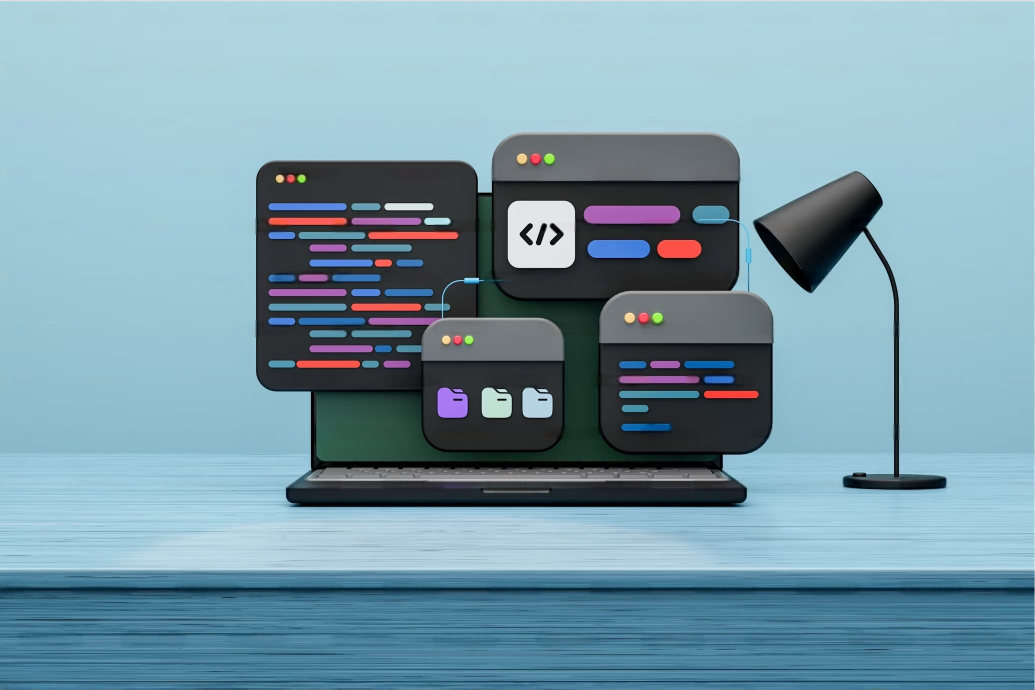· Mark Mansour · Tutorials · 5 min read
Building a YouTube Transcript MCP Server. Staying Technical as a Leader
As engineering leaders, we often find ourselves drifting away from hands-on technical work. Yet maintaining technical currency isn't just about credibility - it's about understanding the tools reshaping our industry.

As engineering leaders, we often find ourselves drifting away from hands-on technical work. Yet maintaining technical currency isn’t just about credibility - it’s about understanding the tools reshaping our industry. In this article, I’ll share my recent experience building a Model Context Protocol (MCP) server that downloads and exposes YouTube video transcripts to LLMs like Claude, demonstrating how leaders can engage with emerging technologies while balancing management responsibilities.
What is MCP and Why It Matters
The Model Context Protocol (MCP) is an open standard that’s gaining significant traction in the AI community. It provides a standardized way for LLMs to interact with external tools and data sources. It essentially functions as a “USB-C port for AI applications.” In my case Claude is the client (called the host in MCP terms). The server is just program that runs on my local machine, and is booted by the client (Claude) on startup.
I was intrigued by MCP’s potential to bridge the gap between static LLM knowledge and dynamic real-world data. Unlike function calling or tool use (which execute code in sandboxed environments), MCP creates a communication channel between LLMs and external applications, enabling capabilities like:
- Accessing file systems and databases
- Running custom code and API calls
- Providing real-time information to models
- Creating interactive, agentic workflows
My MCP Server Project: YouTube Transcript Retrieval
I decided to build an MCP server that would:
- Download a YouTube video’s transcript given a URL
- Expose the transcript as a resource to an LLM
- Include prompts to summarize and highlight key information
This project would test my Python skills (not my primary language), explore LLM-assisted development, and create something genuinely useful for my own research and learning.
The Development Process
I used Claude to help me develop the server, following the approach outlined in Building MCP with LLMs. The Python FastMCP library made development surprisingly straightforward, allowing me to do what some call “vibe coding” - using LLMs to generate implementation based on high-level descriptions.
However, LLM-assisted development has its challenges. The generated code rarely works perfectly on the first attempt. My process became cyclical: run the code, identify errors, report them back to Claude, and have it refine its solution. This debugging loop continued until I had a working MCP server.
For this particular project, Claude performed well with minimal guidance. In other projects I’ve found LLMs need more direction, especially around software engineering best practices. I often find myself guiding the LLM toward better separation of concerns, caching strategies, proper logging, and other principles that ensure maintainable code - even if the LLM handles most of the implementation details.
Despite the assistance, this approach still required my working knowledge of Python, package management, and HTTP protocols. LLM-assisted development augments experienced developers rather than making coding universally accessible to non-technical users. The technical foundation remains essential for troubleshooting and guiding the development process.
In just a few hours, I had a functioning YouTube transcript MCP server running locally, a testament to how this approach can accelerate development for those with the right background knowledge.
Key Insights for Technical Leaders
1. LLM-assisted development is transformative but not magical
The development experience felt turbocharged. I went from concept to working prototype in about 2 hours. However, success depended on my existing knowledge of software architecture, data flows, and system design principles. LLMs excel at generating boilerplate and suggesting implementations, but understanding why certain approaches work requires deeper technical knowledge.
2. MCP represents a significant evolution in AI integration
Having led engineering teams, I immediately recognized MCP’s potential. It creates a standardized interface between AI models and the external world, similar to how APIs standardized service-to-service communication. For technical leaders, understanding this paradigm is crucial as it will likely become a cornerstone of AI application architecture.
3. Technical currency requires hands-on experimentation
This project reinforced my belief that leaders must periodically engage with emerging technologies directly. Reading documentation is useful, but actually building something provides insights that can’t be gained passively. This hands-on knowledge helps me make better strategic decisions and mentor more effectively.
The Leadership Perspective
As engineering leaders, we face a constant tension between management responsibilities and technical depth. My experience suggests that targeted technical projects like this MCP server provide an ideal balance:
- Time-boxed commitment: A small project doesn’t detract from leadership responsibilities
- Focused learning: Building something specific taught me more than general reading
- Practical application: The resulting tool has ongoing utility for my research
- Mentorship value: The experience helps me guide teams exploring similar technologies
Conclusion
The MCP server I built now allows me to have conversations with Claude about YouTube video content without manually copying transcripts. More importantly, it’s demystified a technology that’s likely to be increasingly important in our AI-driven future.
For fellow engineering leaders looking to maintain technical currency while managing teams, I highly recommend similar targeted projects. They provide a refreshing reminder of why we got into technology in the first place, while equipping us with the insights needed to lead effectively in a rapidly evolving landscape.
You can find the code on Github.
Mark Mansour is a technology leader with 25+ years of experience spanning Microsoft, Amazon, and high-growth startups. He has managed engineering organizations of 90+ across multiple geographies, launching major products and driving transformational outcomes in distributed systems, identity management, and developer productivity.